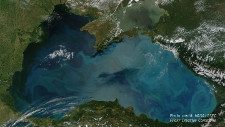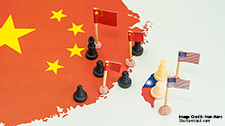Nuclear Safety Cooperation in Northeast Asia
Sangsoo Lee
Northeast Asia—dominated by China, Japan, and South Korea—is currently the world’s third largest energy-consuming region. Comparatively rapid economic growth in Northeast Asia than other regions, driven largely by energy-intensive sectors such as steel and petrochemicals, will continue to lead significant increases in energy demand. By 2030, its primary energy consumption is projected to exceed that of both North America and Europe. This growing demand, however, coupled with a lack of fossil fuel resources in Northeast Asia, has resulted in energy insecurity. – See more at: http://www.eppen.org/en/index.php?sayfa=Yorumlar&link=&makale=193#sthash.1lAWpwJd.dpuf
Related Publications
-
Partners in Peace: Why Europe and Taiwan Matter to Each Other
This book addresses the following fundamental questions: With the EU seeing Taiwan as a partner on its own merit (rather than exclusively through the China factor lens), how can the […]
-
Navigating the Indo-Pacific: How Australia and the EU Can Partner for Peace, Stability, and Prosperity
To navigate the choppy waters of the Indo-Pacific, the EU and Australia must be on the same wavelength regarding shared interests in rules, values, and an open and liberal economic […]
-
China as a Black Sea Actor: An Alternate Route
China’s international role has expanded rapidly in the last decades, and the Greater Central Asian region, Europe, and the Middle East, to which the Black Sea region (BSR) connects, are […]
-
Taiwan-PRC Crisis: What Cross-Strait Conflict Could Cost Europe
The escalating tensions between Taiwan and China pose significant economic and strategic challenges to the European Union, such as the inaccessibility of Taiwanese inputs, market, and capital. This issue brief […]
-
EU-Taiwan Semiconductor Supply Chain: Resilience amid the Digital and Green Transition
As the European Union (EU) sets ambitious goals of maximizing a ‘Digital Decade’ through its Digital Transition plan and attaining carbon neutrality in its Green Transition plan, technology becomes the […]



